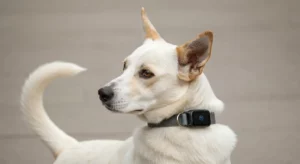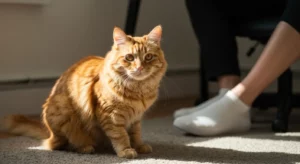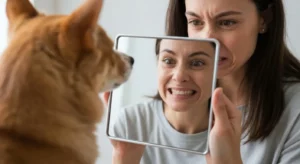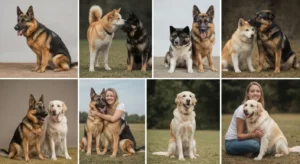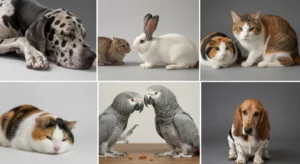LOS ANGELES, CA – In an era where social media defines stardom, a new status symbol is scurrying, slithering, and hopping through the mansions of Hollywood: the unusual pet. In 2025, the trend of celebrities acquiring exotic and unconventional animal companions has escalated far beyond the teacup pigs and Savannah cats of the last decade. A-listers are now showcasing creatures like Fennec foxes, capybaras, and even binturongs, sparking a viral phenomenon that has animal welfare experts and conservationists raising serious alarms about the ethical implications and the dangerous “copycat effect” on the public.
The New Digital Menagerie: From Foxes to “Bearcats”
The latest wave of unusual celebrity pets is marked by its departure from even quasi-domesticated animals. Pop superstar Nova Jones sent the internet into a frenzy last month after posting a video of her pet Fennec fox, “Pixel,” playing in her Beverly Hills home. The post garnered over 10 million likes in 24 hours. Similarly, action star Leo Vance has made his capybara, “Bartholomew,” a regular feature on his social media, showcasing the giant rodent lounging by his infinity pool. Other sightings include tech mogul Julian Croft with a binturong (also known as a bearcat) perched on his shoulder during a video conference.
This is not a fringe movement. An analysis by the Celebrity Influence Monitor (CIM) released in September 2025 found that at least 40 of the top 200 most-followed global celebrities now feature a non-traditional pet on their social media platforms, a 75% increase from just three years ago. The report highlights that these animals are no longer just pets; they are strategic brand assets.
“In the attention economy of 2025, novelty is the ultimate currency,” explains Dr. Aisha Khan, a sociologist and author of The Viral Self. “A golden retriever is relatable, but a Fennec fox is a spectacle. It stops the scroll. For a celebrity, an unusual pet creates a unique personal brand, generates immense engagement, and keeps them in the public conversation. It’s a powerful tool for maintaining relevance.”
The data supports this conclusion. A study conducted by digital marketing firm SocialMetric Analytics revealed that in 2025, celebrity posts featuring unusual pets receive an average of 180% more comments and shares than posts with traditional pets like dogs and cats. This digital feedback loop encourages more stars to seek out ever-more-exotic companions to stand out.
A “Welfare Disaster”: Experts Voice Grave Concerns
While fans may be captivated, veterinary and animal welfare professionals are deeply concerned. They argue that celebrities, despite their wealth and resources, are often ill-equipped to meet the complex needs of wild animals, and their actions glamorize an irresponsible and often cruel practice.
“It’s a welfare disaster waiting to happen,” states Dr. Anya Sharma, a board-certified veterinarian specializing in zoological medicine at the Animal Medical Center in New York. “These are not domesticated animals. A Fennec fox has evolved for life in the Sahara Desert. It has specific dietary needs, requires space to exhibit natural behaviors like extensive digging, and is nocturnal. Keeping one in a penthouse apartment, no matter how luxurious, is contrary to its fundamental biology and can lead to severe stress, disease, and behavioral problems.”
Dr. Sharma emphasizes that specialized veterinary care for these animals is rare and expensive, and many common health issues go undiagnosed by non-specialist vets. “We see tragic outcomes: metabolic bone disease from improper diets, self-mutilation from stress, and aggression born of fear,” she adds.
The Dark Side of the Supply Chain
Beyond the welfare of the individual animal, experts point to the damaging impact on wild populations and the illegal wildlife trade. The demand created by celebrity influence puts immense pressure on species, many of which are already vulnerable.
“For every ‘cute’ celebrity pet you see on Instagram, there’s a dark story behind how it got there,” says Mark Chen, a lead investigator for the Global Wildlife Protection Agency (GWPA). “The exotic pet trade is rife with illegal poaching, smuggling, and horrific conditions. Animals are often snatched from their mothers as infants. The mortality rate during capture and transport can be as high as 80-90% for some species. When a celebrity buys an exotic animal, they are, wittingly or unwittingly, fueling this brutal industry.”
Even when sourced from breeders, the ethical lines are blurry. Many states have a patchwork of inconsistent and poorly enforced laws regarding the private ownership of exotic animals. This legal ambiguity allows a gray market to thrive, making it difficult for consumers to distinguish between a legitimate source and a front for wildlife traffickers.
The Ripple Effect: When Fans Follow Suit
Perhaps the most significant concern for animal welfare advocates is the “copycat effect.” When a beloved celebrity showcases an unusual pet, it creates a powerful desire among their followers to own one too. This leads to a surge in demand from an unprepared public, with devastating consequences.
A 2025 report from the American Pet Products Association (APPA) found a startling correlation between celebrity social media activity and public interest. In the three months after Nova Jones first posted about her Fennec fox, online searches for “buy Fennec fox” increased by over 2,000%. Exotic animal rescue sanctuaries report being overwhelmed.
“We are on the front lines of this trend, and it’s heartbreaking,” says Elena Rodriguez, director of The Haven Sanctuary, a facility that specializes in surrendered exotic pets. “We receive calls every week from people who bought a capybara because they saw one on social media, only to realize they can’t handle a 150-pound rodent that needs a pool and eats 8 pounds of vegetation a day. These animals are often dumped or live out their lives in miserably inadequate conditions before they get to us, if they’re lucky.”
Rodriguez explains that sanctuaries like hers are operating at full capacity, unable to keep up with the influx of surrendered animals that are the direct result of impulsive, trend-driven acquisitions. “These animals can’t be released into the wild, and they can’t live in a typical home. Celebrities move on to the next trend, but we are left to care for these complex animals for the rest of their lives,” she says.
A Path to Responsible Influence?
Amid the criticism, some observers see a potential for celebrities to channel their influence more responsibly. A small but growing number of public figures are choosing to support conservation efforts rather than engage in private ownership.
Actor James Patterson, for example, recently announced a partnership with the Borneo Sun Bear Conservation Centre. Instead of acquiring a pet, he “symbolically adopted” a rescued sun bear and uses his platform to educate his 30 million followers about the species’ plight and to raise funds for the sanctuary.
“This is the gold standard for responsible celebrity engagement,” says Dr. Samuel Finch, a conservation biologist with the World Wildlife Fund. “It satisfies the public’s interest in fascinating animals while directing that energy toward a positive, conservation-based outcome. It shifts the narrative from possession to protection. This approach supports experts on the ground and helps preserve species in their natural habitats, which should be the ultimate goal.”
As the trend of unusual celebrity pets continues to dominate headlines and social media feeds in 2025, the debate intensifies. The captivating allure of these exotic companions clashes starkly with the profound ethical responsibilities they entail. For animal welfare advocates, the message is clear: a wild animal’s life should not be a fleeting status symbol, and true influence lies not in owning the wild, but in preserving it for future generations.



